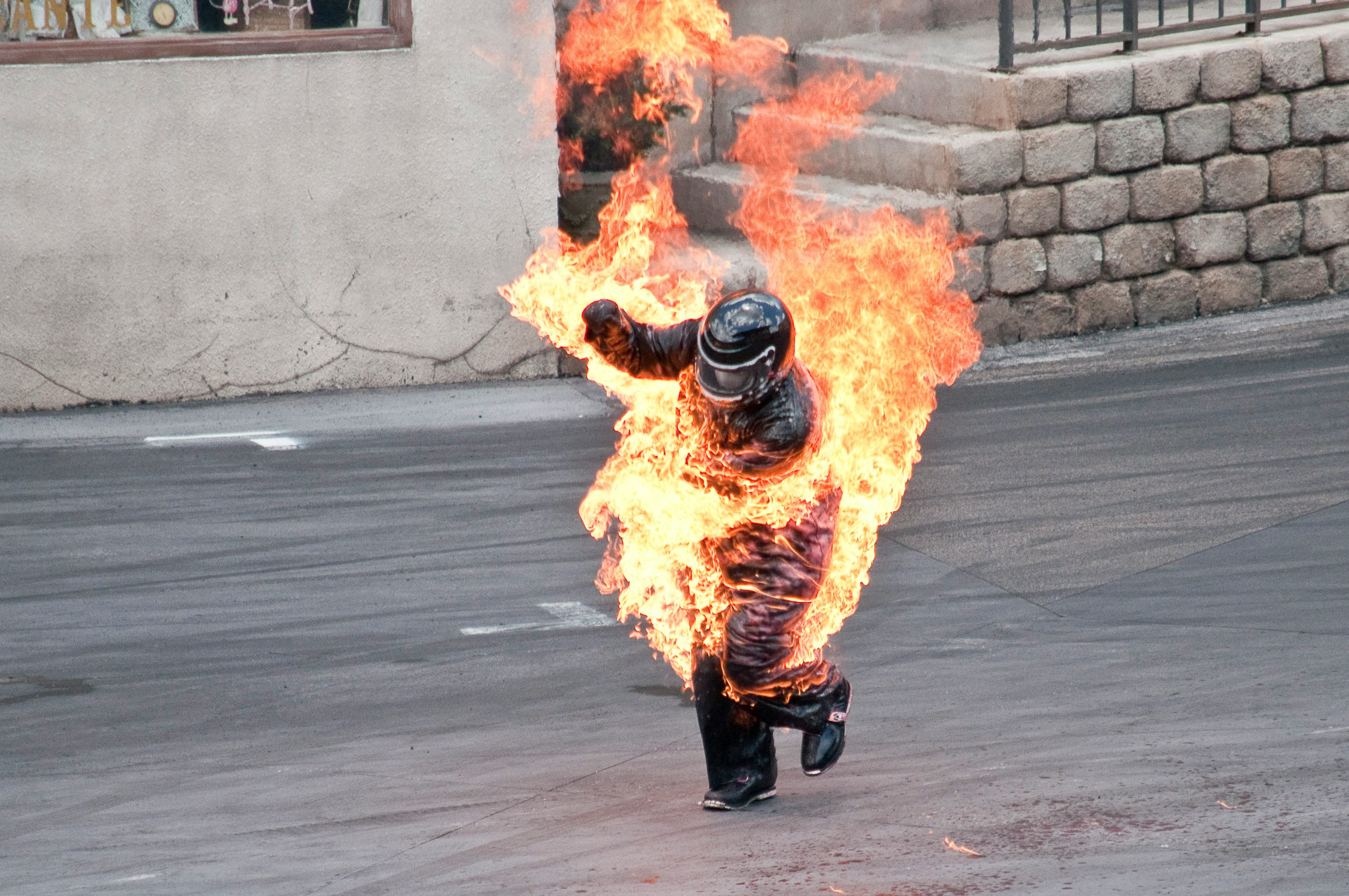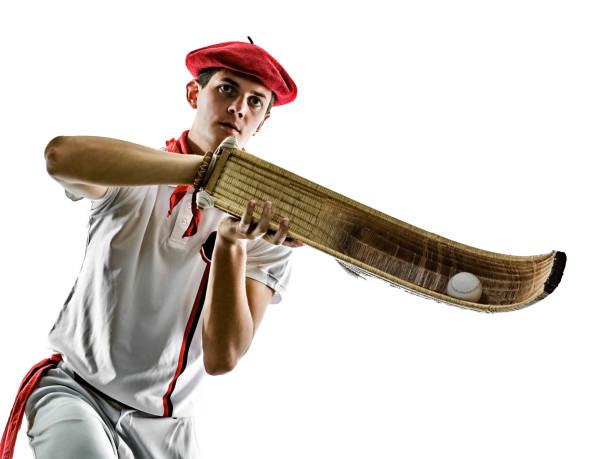The Unseen Art of Stunt Coordination in Action Sports
In the heart-pounding world of action sports, where athletes push the boundaries of human capability, an unsung hero lurks behind the scenes. Stunt coordinators, the masterminds of controlled chaos, play a pivotal role in crafting the jaw-dropping sequences that leave audiences breathless. Their expertise blends creativity, safety, and technical prowess, shaping the very essence of action sports entertainment. This deep dive into the world of stunt coordination unveils the intricate dance between risk and spectacle.

The Evolution of Stunt Coordination
Stunt coordination in action sports has come a long way since its inception. In the early days of extreme sports and action movies, stunts were often performed with minimal safety precautions, relying heavily on the raw skill and courage of the athletes. The birth of modern stunt coordination can be traced back to the 1970s when the film industry began to prioritize safety alongside spectacle.
As action sports gained popularity in the 1990s and 2000s, the need for specialized stunt coordinators became apparent. These professionals brought a new level of expertise to the table, combining their understanding of physics, biomechanics, and sport-specific techniques to create stunts that were not only visually stunning but also as safe as possible for the performers.
Today, stunt coordination in action sports is a highly sophisticated field. It incorporates cutting-edge technology, advanced safety equipment, and a deep understanding of human physiology. Modern stunt coordinators work closely with athletes, engineers, and medical professionals to push the boundaries of what’s possible while minimizing risks.
The Science Behind the Spectacle
At its core, stunt coordination is an exercise in applied physics. Coordinators must have an intimate understanding of concepts like momentum, force, and trajectory to design stunts that are both feasible and impressive. For instance, in designing a motocross jump, coordinators must calculate the exact speed and angle needed for the rider to clear the gap and land safely.
Biomechanics plays a crucial role as well. Stunt coordinators must understand how the human body moves and reacts under extreme conditions. This knowledge helps them design stunts that work with the natural capabilities of the athletes, reducing the risk of injury and increasing the likelihood of successful execution.
Moreover, materials science has become an integral part of stunt coordination. The development of new, lightweight yet strong materials has enabled the creation of safer ramps, landing zones, and protective gear. This constant innovation allows coordinators to design increasingly complex and spectacular stunts while maintaining a high level of safety.
The Art of Risk Management
While the science behind stunt coordination is crucial, the art of risk management is equally important. Stunt coordinators must strike a delicate balance between creating visually impressive stunts and ensuring the safety of the athletes.
This process begins with a thorough risk assessment. Coordinators analyze every aspect of a proposed stunt, identifying potential hazards and developing strategies to mitigate them. This might involve adjusting the stunt design, implementing additional safety measures, or in some cases, deciding that a particular stunt is simply too dangerous to attempt.
Training and preparation are key components of risk management in stunt coordination. Coordinators work closely with athletes to ensure they are physically and mentally prepared for each stunt. This often involves breaking down complex stunts into smaller components and practicing each element separately before attempting the full sequence.
Emergency preparedness is another critical aspect of a stunt coordinator’s role. Despite all precautions, accidents can happen. Coordinators must have comprehensive emergency response plans in place, including on-site medical personnel and evacuation procedures.
The Psychological Dimension
The role of a stunt coordinator extends beyond physical preparation and risk management. They must also address the psychological aspects of extreme sports performance. Athletes attempting dangerous stunts often face significant mental challenges, including fear, anxiety, and performance pressure.
Stunt coordinators work closely with sports psychologists to develop strategies for managing these psychological factors. This might involve visualization techniques, breathing exercises, or specific mental preparation routines. By addressing both the physical and mental aspects of stunt performance, coordinators help athletes achieve peak performance while maintaining their psychological well-being.
Moreover, stunt coordinators play a crucial role in building trust with the athletes. This trust is essential for the successful execution of dangerous stunts. Athletes must have complete confidence in the coordinator’s expertise and judgment, knowing that their safety is the top priority.
Technology and Innovation in Stunt Coordination
The field of stunt coordination is constantly evolving, driven by technological advancements and innovative thinking. One of the most significant developments in recent years has been the use of computer simulations and virtual reality in stunt design.
These technologies allow coordinators to model and test stunts in a virtual environment before attempting them in real life. This not only improves safety but also enables the creation of more complex and spectacular stunts. Coordinators can experiment with different variables, such as speed, angle, and environmental conditions, to optimize the stunt design.
Motion capture technology has also revolutionized stunt coordination. By precisely tracking an athlete’s movements during a stunt, coordinators can analyze performance in minute detail. This data can be used to refine technique, identify potential safety issues, and even create more realistic computer-generated imagery for film and television stunts.
Drone technology has opened up new possibilities for stunt coordination, particularly in aerial stunts. Drones can be used to scout locations, plan camera angles, and even act as moving obstacles in certain stunts. They also provide a safe way to test certain aspects of a stunt without putting an athlete at risk.
The Future of Stunt Coordination in Action Sports
As we look to the future, the field of stunt coordination in action sports is poised for continued growth and innovation. Emerging technologies like artificial intelligence and machine learning are likely to play an increasing role in stunt design and risk assessment.
There’s also a growing trend towards sustainability in stunt coordination. Coordinators are exploring ways to reduce the environmental impact of their work, from using eco-friendly materials in ramp construction to minimizing travel through the use of virtual planning tools.
The integration of augmented reality into live events presents exciting possibilities for stunt coordination. Imagine a motocross event where spectators can see real-time data overlays showing the speed, height, and g-forces experienced by the riders.
As action sports continue to push the boundaries of human performance, the role of stunt coordinators will become even more critical. They will need to balance the ever-increasing demand for spectacular stunts with the paramount concern for athlete safety.
The Unsung Heroes of Action Sports
Stunt coordinators are the unsung heroes of the action sports world. Their work happens largely behind the scenes, but its impact is felt in every heart-stopping moment of a live event or action film. They are the architects of awe, crafting experiences that push the limits of human capability while prioritizing the safety and well-being of the athletes.
The art of stunt coordination is a unique blend of science, creativity, and human understanding. It requires a deep knowledge of physics and biomechanics, an artist’s eye for spectacle, and a psychologist’s insight into the human mind. Stunt coordinators must be innovators, constantly seeking new ways to create excitement and wonder while managing risk.
As we marvel at the death-defying feats of action sports athletes, it’s worth remembering the intricate planning and expertise that goes into making these moments possible. The next time you watch a skateboarder land an impossible trick or a freestyle motocross rider soar through the air, spare a thought for the stunt coordinator who helped make it happen.
The Ethics of Extreme
The world of stunt coordination in action sports is not without its ethical considerations. As stunts become increasingly spectacular and dangerous, coordinators must grapple with complex questions about the limits of acceptable risk.
One of the primary ethical dilemmas faced by stunt coordinators is the balance between spectacle and safety. There’s often pressure from event organizers, sponsors, and even athletes themselves to push the boundaries further. Coordinators must navigate these pressures while maintaining their commitment to safety.
Another ethical consideration is the potential for copycat behavior. When spectacular stunts are broadcast to millions of viewers, there’s a risk that untrained individuals might attempt to replicate them in unsafe conditions. Stunt coordinators and event organizers must consider how to present these stunts responsibly, emphasizing the extensive preparation and safety measures involved.
There’s also the question of long-term health impacts. While immediate safety is always a priority, coordinators must also consider the potential cumulative effects of repeated high-impact landings or exposure to g-forces. This requires close collaboration with sports medicine professionals and a commitment to ongoing research into the long-term effects of extreme sports.
The Global Impact of Stunt Coordination
The influence of stunt coordination extends far beyond the realm of action sports. The techniques and technologies developed for extreme sports stunts have found applications in a wide range of fields.
In the film industry, the expertise of action sports stunt coordinators has elevated the quality and realism of action sequences. Many Hollywood stunt coordinators have backgrounds in extreme sports, bringing their unique skills and perspectives to the big screen.
The safety innovations driven by stunt coordination have also had broader impacts. Advances in protective gear and safety systems originally developed for extreme sports have found applications in areas like workplace safety and military equipment.
Moreover, the risk management strategies employed by stunt coordinators have influenced practices in other high-risk professions. From emergency services to space exploration, the methodologies developed in action sports stunt coordination are being adapted and applied.
Training the Next Generation
As the field of stunt coordination continues to evolve, there’s a growing focus on formal education and training for aspiring coordinators. While many current professionals came into the field through backgrounds in extreme sports or film stunts, there’s an increasing recognition of the need for specialized training.
Several universities and technical institutes now offer courses in stunt coordination, covering topics like physics, biomechanics, risk management, and event planning. These programs aim to produce well-rounded professionals who can meet the complex demands of modern stunt coordination.
Mentorship also plays a crucial role in developing the next generation of stunt coordinators. Experienced professionals often take on apprentices, passing on their knowledge and helping to maintain the high standards of safety and spectacle that define the field.
The Role of Regulations and Standards
As stunt coordination in action sports has evolved, so too have the regulations and standards governing the field. Different countries and sports organizations have developed their own sets of rules and best practices for stunt coordination.
These regulations cover a wide range of areas, from the qualifications required for stunt coordinators to specific safety protocols for different types of stunts. They aim to ensure a consistent level of safety and professionalism across the industry.
However, the rapid pace of innovation in action sports can sometimes outpace regulatory frameworks. Stunt coordinators often find themselves at the forefront of discussions about how to regulate new types of stunts or technologies.
There’s an ongoing debate within the industry about the right balance between regulation and innovation. While safety is paramount, there’s also a concern that overly restrictive rules could stifle creativity and advancement in the field.
The Intersection of Art and Engineering
At its heart, stunt coordination in action sports represents a unique intersection of art and engineering. It requires the precision and analytical thinking of an engineer combined with the creative vision of an artist.
Stunt coordinators must be able to translate abstract concepts into concrete plans, considering everything from the physics of a jump to the aesthetic impact of a particular camera angle. They need to understand the technical capabilities of equipment and athletes while also having an intuitive sense of what will create a truly memorable spectacle.
This blend of skills makes stunt coordination a field unlike any other. It’s a profession that demands constant learning and adaptation, as new technologies and techniques continually reshape what’s possible in action sports.
Conclusion: The Unseen Architects of Amazement
As we’ve explored the world of stunt coordination in action sports, it’s clear that these professionals are truly the unseen architects of amazement. Their work combines rigorous scientific understanding with creative vision, all in service of creating moments that push the boundaries of human achievement.
From the early days of seat-of-the-pants stunt work to today’s high-tech, meticulously planned performances, stunt coordinators have been at the forefront of innovation in action sports. They’ve driven advancements in safety, technology, and performance that have transformed not just their own field, but many others as well.
As action sports continue to evolve and new challenges emerge, stunt coordinators will undoubtedly be there, working behind the scenes to make the impossible possible. They’ll continue to balance risk and reward, science and spectacle, always with the goal of creating experiences that inspire and amaze.
The next time you witness a breathtaking stunt in an action sports event or movie, take a moment to appreciate the unseen work that went into making it happen. Behind every gravity-defying leap or heart-stopping trick, there’s a stunt coordinator who helped bring that moment to life, blending art and science to create pure amazement.





